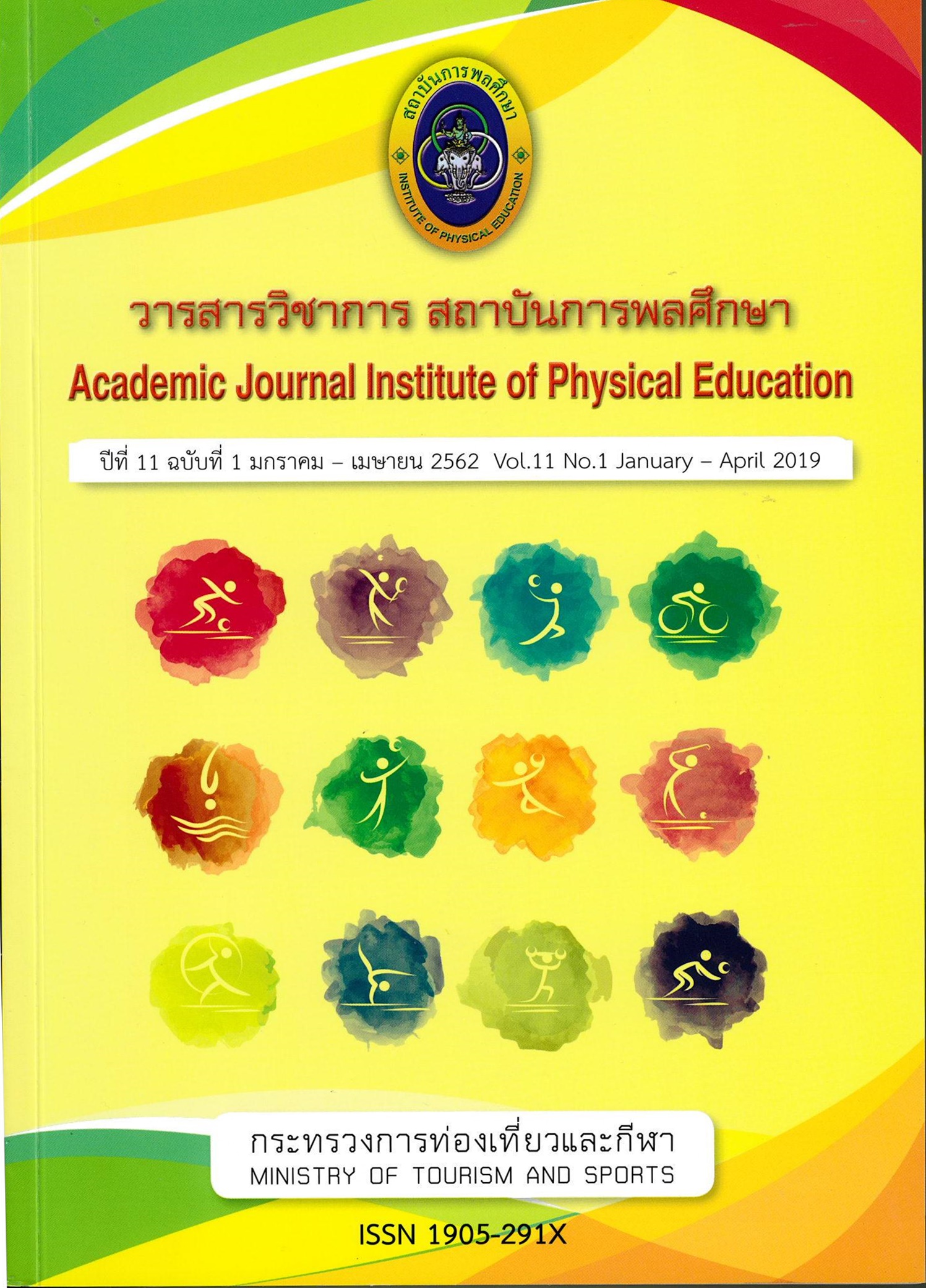DOPING: THE THIN RED LINE BETWEEN SPORTS SCIENCE DEVELOPMENT AND ETHICS VIOLATIONS
Main Article Content
Abstract
The success in world class sport competition is the outcome of the advance in science and technology. This includes the applied knowledge from various hypotheses to develop and improve human physical performance. It is well known that the use of science and technology in stimulating physical and biological changes in order to go beyond the limit, and be the winner of the game. Nevertheless this achievement has to trait off with physical health risk, immoral and illegal issues.
Article Details
The published article is a copyright of the Academic Journal of Thailand National Sports University. The passage appeared in each article in this academic journal is a perspective of each author which is not related to the journal. Each author is required to be responsible for all components of his/her own article. If there are any mistakes, each author must be responsible for those mistakes on his/her own.
References
บัญชา ธนบุญสมบัติ. จากโด๊ปยาสู่โด๊ปยีนเมื่อเทคโนโลยีป่วนสปิริตการกีฬา. ใน: ปณต ไกรโรจานันท์, บรรณาธิการ. กีฬาโลก. กรุงเทพ ฯ : เอทีพรินตงิ้; 2548. หน้า 107-14
มติชนออนไลน์. การกระตุ้นด้วยสเต็มเซลล์. [Online]. http://www.matichon.co.th/new_detail.php?newsid=42316
มณินทร รักษ์บำรุง. (2556). สุขภาพและสุขสมรรถนะในโรงเรียน. วารสารวิชาการสถาบันการพลศึกษา ปีที่ 5 ฉบับที่ 1 มกราคม – เมษายน 2556
มณินทร รักษ์บำรุง, รัชนีกร กงซุย, ถาวรินทร รักษ์บำรุง. (2556). ผลกระทบการสูญเสียเลือดอย่างเฉียบพลับ ต่อค่าความสามารถสูงสุดในการใช้ออกซิเจน . ในรายงานการประชุมวิชาการวิทยาศาสตร์วิจัยครั้งที่ 5: 4 – 5 มีนาคม 2556
สำนักงานกองทุนสร้างเสริมสุขภาพ (สสส). (2548). แบบทดสอบสมรรถภาพทางกายที่สัมพันธ์สำหรับสุขภาพของเด็กไทยอายุ 7 -18 ปี. นนทบุรี: โรงพิมพ์ พี เอส พริ้นท์.
หนังสือพิมพ์ผู้จัดการ, (2560). จริงหรือที่เขาว่า “มนุษย์ทุกคนล้วนเป็นญาติกัน”? กับ บรรพบุรุษของคนแซ่ลิ้ม. 15 พฤษภาคม 2560
Casoni, I. et al. (1993). Hematological indices of erythropoietin administration in athletes. International Journal of Sports Medicine, 14: 307 - 311.
Cummiskey, J. (2002). Report on the IOC MC Gene Therapy Medicine and Sport. DOCONED Annual report 2002: Doping Controle Nederland.
Ghaphery, N. A.(1995). Performance-Enhancing Drugs. The Orthopedic Clinics of North America, 26: 433-442
Gledhill, N. (1982). Blood Doping and Related Issues: a brief review. Medicine and Science in Sports and Exercise, 14:183-189.
Grant, M. (1964). The Birth of Western Civilization: Greece and Rome. New York: McGraw-Hill.
Haisma, H.J. et al . (2004). Gene Doping. Netherland Center for Doping Dffairs.
Huard, J. et al. (2003). Gene therapy and tissue engineering for sports medicine. Journal of Gene Medicine 5:93-108
McArdle, W. D., Katch, F. I., & Katch, V. L. (2001). Exercise Physiology; Energy, Nutrition, and Human Performance (5 th ed): Lippincott Williams & Wilkins.
Question of the week: is there stem cell doping in the Olympics?. [cited 2014 Jan 20]. Available from: http://www.ipscell.com/2012/08/question-of-the-week-is-there-stem-cell-doping-in-the-olympics/
Rankinen, T. et al. (2001). The human gene map for performance and health-related fitness phenotypes. Medicine and Science in Sports and Exercise. 33: 855-867
Raper, S.E.(2003). Fatal systemic inflammatory response syndrome in a ornithine transcarbamylase deficient patient following adenoviral gene transfer. Molecular Genetics and Metabolism, 80: 148-158
Tenenbaum, L., Lehtonen, E., & Monahan, P.E. (2003). Evaluation of risks related to the use of adeno-associated virus-based vectors. Current Gene Therapy, 3: 545-565
The World Anti-Doping Agency. (2004). The 2004 prohibited list international standard. Molecular Therapy 3: 819-820
Wilmore, J.K., Costill, D.L., & Kenney L.W. (2008). Physiology of Sport and Exercise (4 th ed). Hong Kong: Human Kinetics.


